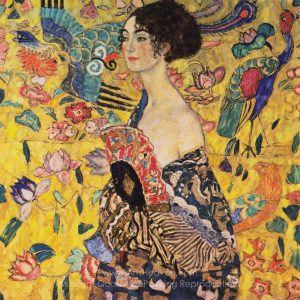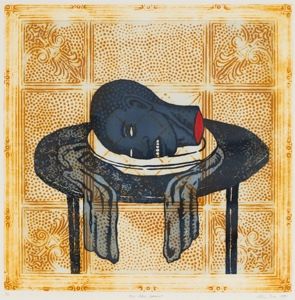Identifying Portraits Activity
Look through the following pieces and identify which works you think would be considered portraits by art historians.




 Watch this video to complete the activity!
Watch this video to complete the activity!
(re)Defining the portrait
The term ‘portrait’ signifies a category of artworks that represent a specific individual in a painting, sculpture, photograph, or other art form. We all think we could identify a piece of art as a portrait. We might think of examples such as the Mona Lisa, a portrait of George Washington, or even the Girl with a Pearl Earring. Historically, however, women have not been depicted as individuals in portraiture. Instead, they are often shown as allegories or metaphors in a way that idealizes the idea of ‘woman’ as opposed to the individual women themselves.
In our exhibition, our goal is to analyse this idea of portraiture, and to create a broader definition that allows for greater representation of women to reclaim identity, individuality, and agency through art. As you saw in the mini activity above, defining what is and is not a portrait may be easy at times and at others, incredibly difficult. Why is the photograph of the woman for Maybelline not a portrait? The photograph represents an individual woman, but focuses on her beauty as a tool for advertisement, not to be celebrated for its own sake. In our exhibition, we defy traditional notions of portraiture as an art form that for centuries has reduced the individuality of women as the subject. We thus define what a ‘portrait’ is through an activist lens, including any piece that represents an individual. We juxtapose older works that reduce the individuality of their female subjects with works from a range of artists that contrast this idea and ultimately defy traditional themes.
Throughout our exhibition we include pieces that use the traditional idea of portraiture and reclaim identity and agency for the subject, like Saar’s Girl with a Pearly Earring. Importantly, though, we also include works that reject traditional forms of portraiture, like Blue Plate Special and Angel No. 2, pictured below, because they not only redefine the form of portraiture, but also forge new avenues for expression that give more agency to the subject and artist alike.



Sources:
Tames, Clare. “Classic Paintings of Women.” ArtsHeaven.com, 30 June 2019, www.artsheaven.com/famous-classic-paintings-of-women/.
William Witt – Black Nude Hands on Chest (Bowdoin Collection)